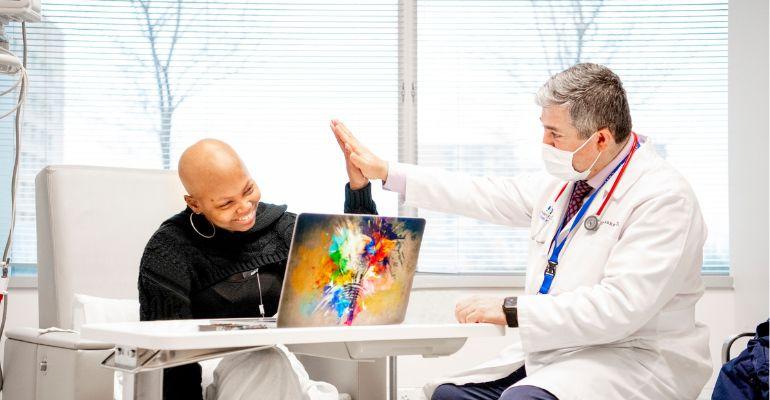Researchers revealed positive results among its first patients during a presentation of preliminary data from a clinical trial aimed at discovering a cure for sickle cell disease. Sickle cell disease, a genetic blood disorder, is a painful and debilitating condition for which there are few approved therapies.
Researchers involved in the multicentre Ruby Trial presented an update on the safety and effectiveness of a single dose of EDIT-301, an experimental one-time gene editing cell therapy that modifies a patient’s own blood-forming stem cells to correct the mutation responsible for sickle cell disease. Results were presented at the European Hematology Association Hybrid Congress in Frankfurt, Germany.
Related: Forecasting cell and gene therapies, one model at a time
The first four patients, two of whom were treated at Cleveland Clinic Children’s, had their stem cells collected for gene editing. The patients then underwent chemotherapy treatment to destroy their remaining bone marrow, making room for the repaired cells that were later infused back into their bodies. This is the first time a novel type of CRISPR gene-editing technology — known as CRISPR/CA12 — is being used in a human study to alter the defective gene. This technology is a highly precise tool to modify blood stem cell genomes to enable robust, healthy blood cell production.
The data showed new white blood cells in all four patients at about four weeks with no severe adverse effects. Patients also achieved a normal level of haemoglobin, which is the most important component of red blood cells that carry oxygen throughout the body. The patients also have been free of sickle cell disease’s associated pain attacks for a period of 11 months and seven months following therapy.
“New treatments like this are critical for people who have sickle cell disease,” said principal investigator Rabi Hanna, M.D., Director of the Pediatric Blood and Bone Marrow Transplant programme at Cleveland Clinic Children’s and Principal Investigator. “These initial results provide hope that this new technology will continue to show progress as we work toward creating a possible functional cure for this devastating and life-threatening disease.”

Rabi Hanna, M.D
While there are an estimated one million to three million people in the US who have the sickle cell trait, there are only about 100,000 people with sickle cell disease. Sickle cell trait and the disease are found more often in certain ethnic groups, including African Americans. In the US, about one in 365 African American babies have sickle cell disease.
Sickle cell disease is an inherited blood disorder that leads to the production of abnormal haemoglobin, which is a red protein responsible for transporting oxygen in the blood. Normal red blood cells are round and can move through small blood vessels to deliver oxygen. However, in people with sickle cell disease, the genetic change in DNA causes a chemical alteration in haemoglobin and alters the shape of red blood cells into a sickle, blocking them from passing through narrow blood vessels.
Related: Genomics and its rapid evolution in the Middle East
They can clog or break apart, which also leads to decreased red blood cell life and increased iron storage in the liver and heart. This can cause conditions such as liver fibrosis, liver failure, stroke, cardiomyopathy, and heart failure, along with severe pain.
For most people with the condition, medications can modify disease severity and treat symptoms. However, despite current therapies, the average life of a sickle cell patient is in the mid-40s. A blood or marrow transplant can cure sickle cell disease, but the transplant often requires a sibling donor and has the potential for severe graft-versus-host disease, which is when donor bone marrow or stem cells attack the recipient.
This article appears in Omnia Health magazine. Read the full issue online today.

